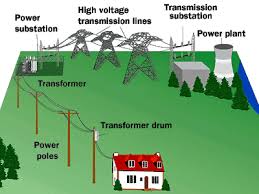(I’ve been suggesting this for years. I think the world would be a better place if someone were to log the telephone poles and mine the substations…Go ELF!!!…cd)

AFTER the blackout of 2003, addressing the vulnerabilities of America’s electrical grid was a top priority. Not only was the creaky system going to be repaired and restructured, its key facilities were going to be reinforced to guard against terrorism. After all, Al Qaeda documents suggest that terrorists have considered attacking the grid, which would cause chaos, wreak economic havoc, and possibly cost lives.
So here we are, nearly two years later, and is the grid safer? Sadly, no. Terrorists could still send a nation as powerful and modernized as the United States into the dark ages for weeks.
Here’s why. Our electrical grid distributes energy throughout the nation on an as-needed basis. Generators transmit power over high-voltage lines using electrical substations. These substations are controlled by an enormous computerized switching system. This system uses sophisticated and difficult-to-replace solid-state and electro-mechanical relays. The relays prevent overloads and other failures from crippling the grid’s electrical equipment and transmission facilities. Herein lies the vulnerability.
The relays are housed in lightly protected buildings next to substations. While barbed-wire fences protect the substations themselves, there is little to safeguard the switching stations. In most cases only aluminum prefabricated buildings house and protect the switching computers and relays. (There are hundreds of these stations in the United States, but some are more important than others because of the amount of energy they handle.)
To attack the grid, a terrorist need only study publicly available trade journals, which explain where new facilities are constructed. These journals document both the transmission capacity of switching stations and the geographic areas for which they are responsible. A terrorist could then disable a particular system by destroying the computers and relays housed in the poorly protected building.
An attack on one facility would likely plunge the served area into immediate darkness and, depending on the size of the substation, would cause a significant strain on the rest of the electrical grid, particularly in summer, when usage is at its peak. A coordinated attack on four or five critical sites could send much of the nation into darkness for weeks.
Consider this: it takes days to make repairs during even small-scale outages because each station has customized equipment. Faced with the damage from a coordinated attack, technicians would need weeks to find the components necessary to repair these specialized computer systems. After acquiring these components, the technicians would then face the laborious task of properly programming and rewiring the systems.
What can we do? It’s not complicated: government and industry need to harden security at these lightly guarded facilities – starting with the ones that control the most power and working down from there. The energy industry is well aware of our vulnerability, but it simply hasn’t done enough to bolster security because of the enormous cost of protecting critical substations.
True, security doesn’t come cheap. Safeguarding federal buildings following the Oklahoma City bombings cost more than $1 billion. Securing electrical substations would cost at least as much. But the price of a nationwide outage would dwarf that figure. The Department of Homeland Security and Department of Energy must pass regulations to ensure that the energy industry protects critical substations. We must act before our enemies do.
Gregory S. McNeal is a research fellow at the Case Western Reserve University School of Law’s Institute for Global Security Law and Policy.
The Terrorist and the Grid – New York Times
